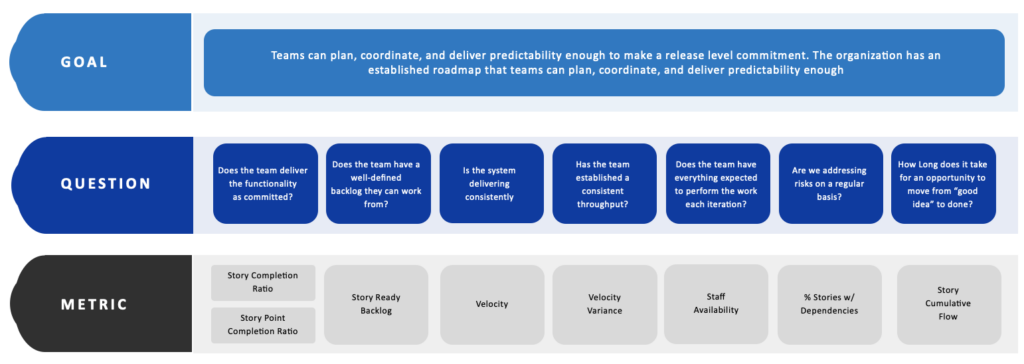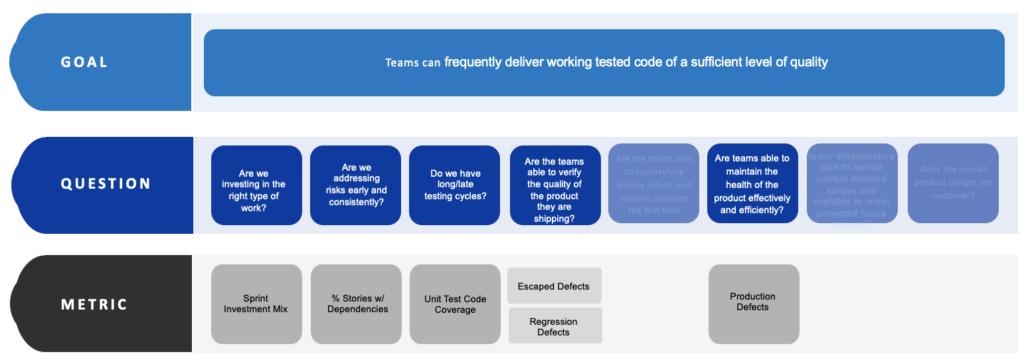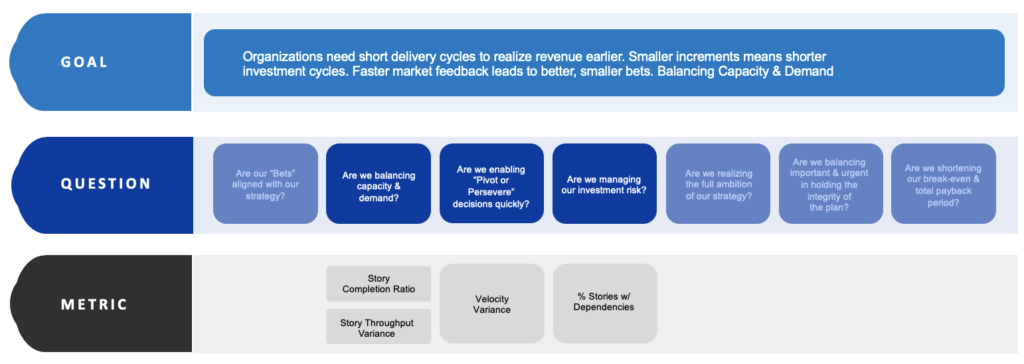A Delivery Team is a prototypical Scrum or Kanban team consisting of developers, testers, analysts, and other specialists who may be required to deliver against their product backlog. Their goal is to deliver a working tested product increment. Empowered teams that stay together over time tend to be more productive. For these teams to be successful, they must be part of a trustworthy system.
Team Definition, Roles & Responsibilities
Governance Capabilities, Governance Model & Meetings
Measurement & Tooling
This is the detailed level of execution within the organization. These teams are usually six to eight people and are formed around an individual product or business capability.
In a large product organization, they may be formed around a subset of functionality or a feature area. The Delivery Team is responsible for creating optionality through stories that maximize the amount of work not done to deliver on the Acceptance Criteria of Features. A Delivery Team receives backlog from a Product Owner operating at the Product Line tier of the governance model.
A Delivery Team has everything it needs to deliver working, tested product for each iteration within its realm of responsibility and on its backlog. Delivery Teams may be component, service, or feature teams and may be supported by other such teams.
Click on the icons/links below to read more details on Delivery Team Roles.
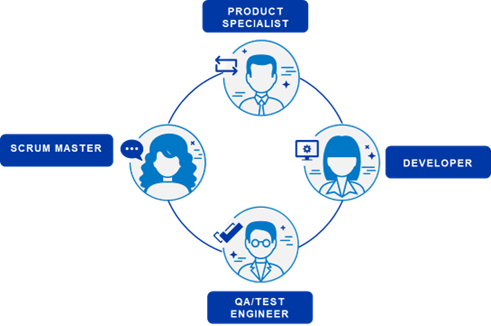

Collaborates with the Product Team to continually mature the story backlog and ensure the delivery team doesn't get blocked or surprised; works closely with the Delivery Team to ensure stories are refined and available for sprint planning. Read More

Conducts automated or manual testing on the system and confirms that stories meet acceptance criteria by both validating the fit to need and verifying that the system performs as intended. Read More
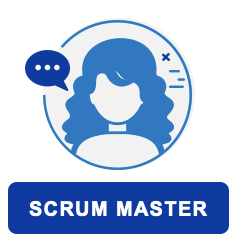
Ensures that the Scrum activities take place on a regular cadence, reports status, removes blockers, and plans celebrations. Ensures the day-to-day activities of the Delivery team are happening and collaborates with the Product Orchestrator. Read More
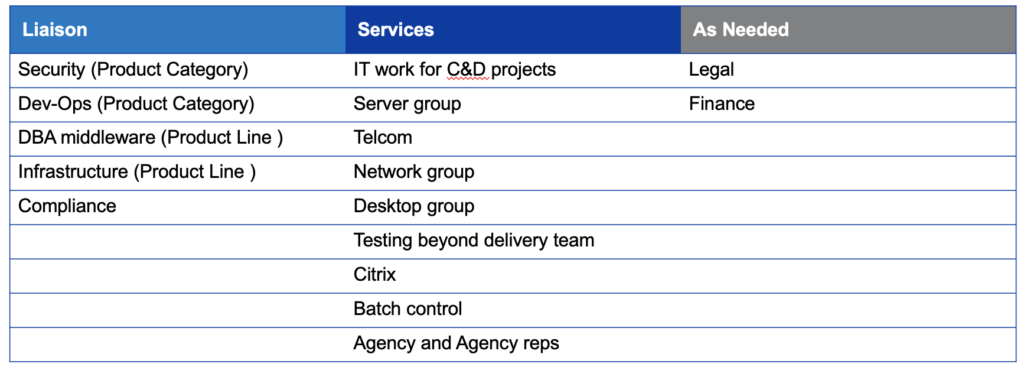
The six meetings/working sessions that the Delivery Team performs are below.
Every Two Weeks; 4 Hours Max
The team collaborates to plan the critical work for the Sprint.
2-3 Times Per Week; 1-2 Hours
The team reviews stories and acceptance criteria and gets them ready for sprint planning.
Daily; 15 Minutes
The purpose of the daily standup (also called the daily Scrum) is to share information about the work in the Sprint, coordinate with team members, and surface any impediments to completing the work. Team members make commitments to each other to achieve the sprint commitment.
Every Two Weeks; 1 Hour Max
The agile assessment helps us understand the team’s journey towards basecamp outcomes. This allows us to make an informed coaching plan based on teams current capability.
The team demonstrates work completed during the Sprint to the stakeholders, gives the delivery team status, and adapts the Backlog if needed.
Every 2 Weeks; 1 Hour Max
The team inspects itself, assesses how they’re doing against set capabilities and metrics, and creates an improvement plan to be executed during the next Sprint.
Here are the Delivery Team’s high-level goals for each capability.
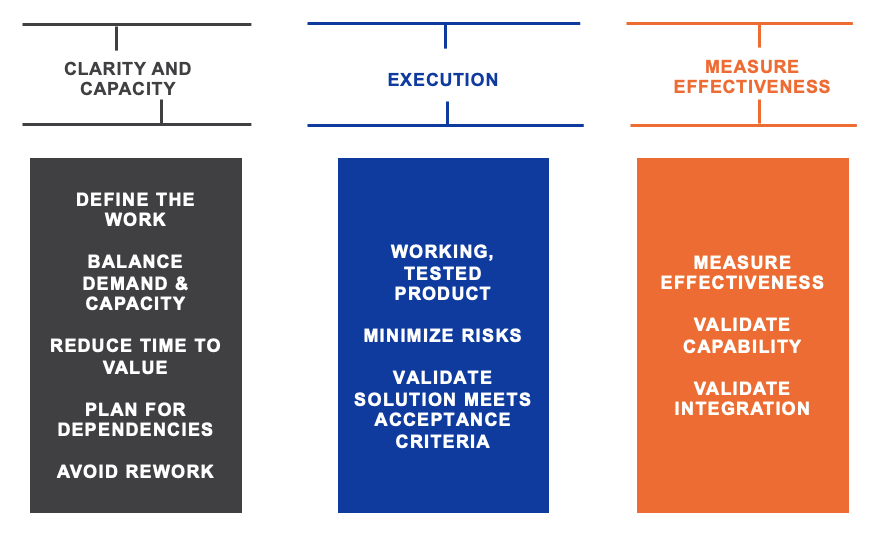
Explore Delivery Team States by Capability

A goal to meet a specific purpose is defined for a team or system, focusing on demonstrating a meaningful outcome for the business.
A crafted set of questions define an objective model for assessing the achievement of our goals.
Based on the objective model, a set of metrics is associated with every question to answer it measurably.
